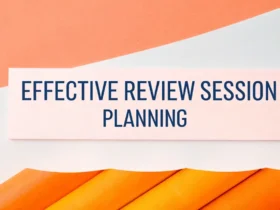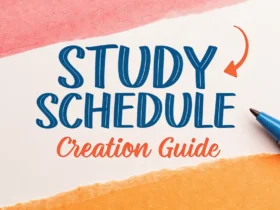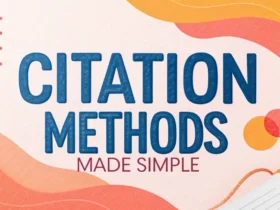Are you eager to unlock the secrets to language mastery but feel lost in a sea of study techniques? More than 60% of language learners report feeling overwhelmed by the sheer number of methods available, unsure which ones truly deliver results. You’re not alone. The path to fluency can seem daunting, but with the right strategies, it can be an exciting and achievable journey.
This article is your guide to navigating the world of language study. We’ll explore proven methods, backed by research and real-world success, that can help you learn any language more effectively. Discover how to tailor your approach, overcome common hurdles, and transform your language learning experience from frustrating to fulfilling.
Understanding Your Language Learning Style
Before diving into specific techniques, it’s key to know yourself. How do you learn best? Are you a visual, auditory, or kinesthetic learner? This awareness can reshape how you approach language study.
-
Visual Learners: Do you prefer diagrams, charts, and written notes? Visual learners often benefit from flashcards, mind maps, and watching videos with subtitles.
-
Auditory Learners: Do you learn best through listening? Auditory learners tend to excel with podcasts, music, language partners, and recording themselves speaking.
-
Kinesthetic Learners: Do you learn through physical activity and hands-on experience? Kinesthetic learners often thrive with role-playing, using physical objects, and immersive environments.
Knowing your learning style helps you tailor your language study for peak results. Don’t be afraid to experiment and blend techniques that suit you best.
Immersion: The Deep Dive
Immersion is more than just travel; it’s about creating an environment where the language surrounds you. Research shows that immersion can significantly accelerate language acquisition.
Creating an Immersive Environment at Home
You don’t need to hop on a plane to immerse yourself. Here’s how to create an immersive experience without leaving home:
-
Change Your Phone and Computer Settings: Switch the language on your devices to your target language. You’ll encounter new vocabulary every day.
-
Label Everything: Put sticky notes with the target language word on objects around your house. This reinforces vocabulary in context.
-
Watch Movies and TV Shows: Start with subtitles in your native language, then switch to subtitles in the target language, and eventually try watching without subtitles.
-
Listen to Music and Podcasts: Surround yourself with the sounds of the language. Pay attention to lyrics and try to understand the conversations.
-
Read Books and Articles: Start with children’s books or graded readers, then gradually move to more complex material.
Travel and Language Exchange Programs
If possible, consider traveling to a country where your target language is spoken. Language exchange programs can also offer immersive experiences with native speakers.
Active Recall: Training Your Brain
Active recall involves retrieving information from memory, rather than passively rereading it. This method strengthens neural connections and boosts retention.
Spaced Repetition Systems (SRS)
SRS algorithms schedule reviews based on how well you know a word or concept. Anki is a popular SRS tool.
Flashcards: A Classic Approach
Flashcards are simple but powerful. Write the word or phrase in the target language on one side and the definition or image on the other. Use them regularly and mix up the order.
Testing Yourself
Regularly test yourself on what you’ve learned. This can include quizzes, self-made tests, or using language learning apps with testing features.
The Power of Context: Learning in Real-Life Scenarios
Learning words and grammar rules in isolation is less effective than learning them in context. Real-life scenarios provide meaning and make the language more memorable.
Role-Playing and Simulations
Practice speaking in realistic situations. Imagine you’re ordering food at a restaurant, asking for directions, or making a business presentation.
Language Exchange Partners
Connect with native speakers for language exchange. You can practice speaking, ask questions, and learn about the culture.
Immersive Apps and Games
Many apps and games simulate real-life scenarios. This makes learning fun and engaging.
Grammar: Building the Foundation
While some advocate for learning grammar later, a basic understanding of grammar is key to building a solid language foundation.
Understanding Basic Grammar Rules
Learn the basic sentence structure, verb conjugations, and common grammatical patterns of your target language.
Using Grammar Resources Effectively
Use textbooks, online courses, and grammar guides to understand the rules. Practice with exercises and quizzes.
Avoid Over-Analyzing
Don’t get bogged down in every detail of grammar. Focus on understanding the basics and then gradually improve your knowledge as you progress.
Speaking: Overcoming the Fear
Speaking is often the most challenging part of language learning, but it’s also the most rewarding.
Finding Opportunities to Speak
Look for language exchange partners, conversation groups, or online tutors. Don’t be afraid to make mistakes.
Recording Yourself
Record yourself speaking and listen back to identify areas for improvement.
Shadowing Technique
Listen to a native speaker and repeat what they say, mimicking their pronunciation and intonation.
Reading and Writing: Reinforcing Your Knowledge
Reading and writing help reinforce vocabulary, grammar, and sentence structure.
Choosing Appropriate Reading Materials
Start with simple texts like children’s books, graded readers, or articles on topics you enjoy.
Writing Regularly
Keep a journal, write emails, or participate in online forums in your target language.
Getting Feedback
Ask native speakers or language tutors to review your writing and provide feedback.
Common Mistakes and How to Avoid Them
Language learners often make the same mistakes. Here’s how to avoid them.
Relying Too Much on Translation
Try to think in the target language instead of constantly translating from your native language.
Fear of Making Mistakes
Embrace mistakes as part of the learning process. They’re opportunities to learn and improve.
Lack of Consistency
Set realistic goals and stick to a regular study schedule. Consistency is key to progress.
The Role of Technology in Language Learning
Technology offers a wealth of resources for language learners.
Language Learning Apps
Duolingo, Babbel, Memrise, and Rosetta Stone are popular apps that offer interactive lessons and gamified learning.
Online Dictionaries and Translators
Google Translate, WordReference, and Linguee can help you look up words and phrases.
Language Learning Websites
Websites like iTalki, Verbling, and HelloTalk connect you with native speakers for online lessons and language exchange.
Staying Motivated: Long-Term Commitment
Language learning is a marathon, not a sprint. Here’s how to stay motivated.
Setting Realistic Goals
Set achievable goals and celebrate your progress along the way.
Finding a Language Learning Community
Connect with other learners for support, encouragement, and accountability.
Making It Fun
Choose activities that you enjoy, whether it’s watching movies, listening to music, or playing games.
Tailoring Your Approach to Specific Languages
Different languages have different challenges. Here’s how to tailor your approach.
Romance Languages (Spanish, French, Italian)
Focus on verb conjugations, gendered nouns, and pronunciation.
Germanic Languages (German, Dutch, Swedish)
Master the complex grammar rules, word order, and compound words.
Asian Languages (Chinese, Japanese, Korean)
Focus on tones, character recognition, and honorifics.
Overcoming Plateaus in Language Learning
Everyone hits plateaus. Here’s how to break through them.
Changing Your Study Routine
Try new methods, resources, or activities to keep things fresh.
Focusing on Weak Areas
Identify your weaknesses and dedicate extra time to improving them.
Seeking Feedback from Native Speakers
Ask native speakers to identify areas where you can improve.
Is there a “best” language study method?
There is no such thing as a single “best” language study method. What works well for one person may not be as effective for another. Furthermore, the best approach may vary depending on your individual learning style, the specific language you’re learning, and your goals.
However, here are some general principles and strategies that have been proven to be highly effective for many language learners:
- Active Learning: Actively engage with the material.
- Immersion: Surround yourself with the language.
- Spaced Repetition: Review material at increasing intervals.
- Contextual Learning: Learn words and phrases in context.
- Consistent Practice: Dedicate time to study every day.
- Speak From Day One: Don’t wait until you feel “ready” to speak.
- Embrace Mistakes: Don’t be afraid to make mistakes.
- Make it Fun: Find ways to make learning enjoyable.
- Be Patient: Language learning takes time and effort.
By combining these principles and strategies in a way that suits your individual needs, you can create a language study routine that is both effective and enjoyable.
The Key to Language Mastery
Language learning is a personal journey, and the path to fluency is unique for everyone. By understanding your learning style, embracing effective methods, and staying motivated, you can unlock the secrets to language mastery. So, don’t be afraid to try new things, make mistakes, and most importantly, enjoy the process. Every word you learn, every conversation you have, brings you one step closer to your goal.















Leave a Reply
View Comments